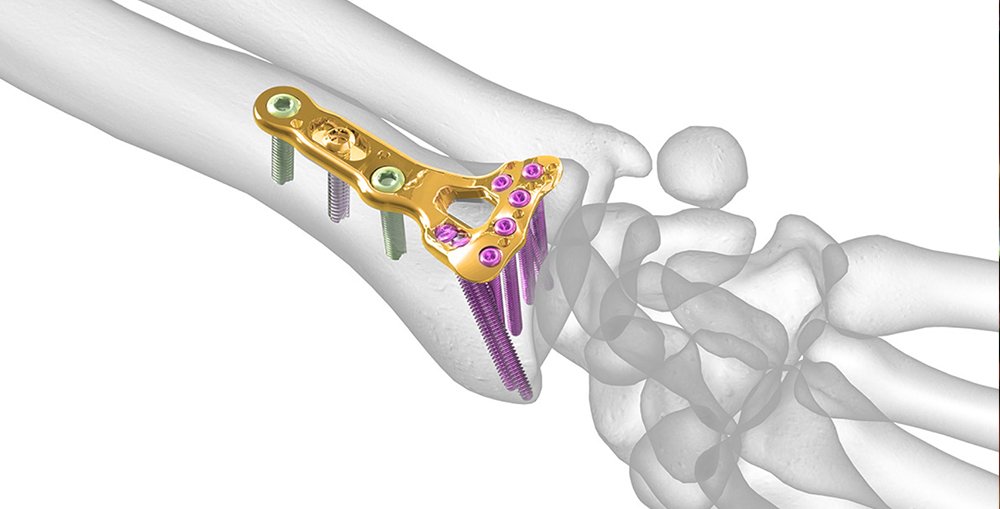Wrist and Hand Fractures – When any of the long bones of the hand (metacarpals) or short bones (phalanges) are broken, it’s known as hand fracture. A hand fracture is an injury commonly encountered by athletes, who take part in contact sports (including rugby, soccer, and football) and winter sports (skiing and snowboarding). Various plates are used to treat these fractures. Siora offers these plates, some of which are Locking Wrist Fusion Plate, LCP Y-Plate, LCP T-Plate, LCP Condylar Plate, LCP Adaptation Plate can be obtained from Surgical Implants Manufacturers.
A broken wrist (distal radius fracture) is a fracture of one or more bones that attach your forearm to your hand. Wrist fractures can vary from a small, hairline crack to a bone or bones broken into 2 or more parts.
Wrist and hand fractures are also quite common amongst the old, especially those with osteoporosis. Osteoporosis is a disease that affects mainly postmenopausal women and few men over the age of fifty. When women and men age, bone mass density reduces, making them more vulnerable to fractures. Their susceptibility to falling only increases the risk.
It’s important to take immediate medical intervention and care if you’re thinking that you have suffered a wrist or hand fracture.
Symptoms:
Various types of wrist and hand fractures have somewhat different symptoms. This is because they occur in various locations, however, they can be generalized. The common symptoms are the following:
- Bruising
- Pain
- Weakening
- Swelling
- Reduced range of motion
- The inability to grab
The symptoms of wrist and hand fractures may be mistaken for the symptoms of some other medical conditions. They may include strains and sprains. Ensure you consult a doctor to know if you have a fracture and get suitable treatment.
Causes:
Wrist and hand fractures are usually the results of a blow or fall of the hand. Some common causes are as follows:
- Falling on an outstretched wrist or hand– When you catch yourself with one hand after a fall, you’re putting a lot of stress on your bones. If it’s a hard fall, or if your bones are weakened (e.g., by osteoporosis), you’re susceptible to fractures.
- A blow to the wrist and hand– If you receive a blow to your wrist or hand, you will sustain a fracture. If the fingers aren’t balled up, they’re also quite vulnerable to fracture.
- Twisting the wrist or hand– If your hand is twisted, as can happen in sports, the bones of your hands and/or wrists are overstretched and fracture.
Treatment options
Nonsurgical treatment
A wrist fracture is one of the easiest kinds of bone breakages to treat without surgery. Typically, a casting method is utilized to immobilize the bone when it heals. In some cases, the wrist may have come out of alignment when it broke; when this occurs, the doctor can use local anesthesia to realign the wrist and place it on the accurate track of healing.
If a hand fracture is minor, it may be treated with a non-surgical procedure. If the fingers are broken, they may place in a finger splint so that the remaining hand can be mobile while the finger repairs; if other bones are broken, they can require a splint or cast to stabilize the injured part of the hand while the bone heals from the breakage. Painkillers and antibiotics can be given to help decrease the infection risk and ease the pain from the trauma.
Surgical treatment
In some cases, particularly when the bones have shifted out of their usual place, a wrist fracture will need surgery. The goal of most wrist fracture surgeries is to help guide the bones back into their position and hold them while the bone fragments heal.
Hand fractures can also need surgery in serious cases. The aim of most hand fracture surgeries is to reconnect the bones as well as hold them in their position, so they don’t cause any permanent deformities. These surgeries require orthopedic implants.
Siora offers a variety of implants that can be used for treatment in case of a Wrist or hand Fracture. The implants and instruments are listed in the catalog of Microlock Locking Hand Plate.







